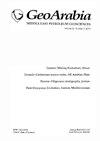Tournaisian (Mississippian) brachiopods from the Mobarak Formation, North Iran
引用次数: 21
Abstract
Following detailed stratigraphic work on the Mississippian marlstone and bioclastic limestone of the Mobarak Formation of the Alborz Mountains in North Iran, forty-eight of the most important brachiopod taxa are here systematically described and illustrated. The ranges of the taxa are given along the Abrendan and Simeh Kuh stratigraphic sections, located north of Damgham. The examined brachiopod species date the base of the Mobarak Formation to the Tournaisian, in absence of age-diagnostic foraminifers. Change in brachiopod settling preferences indicates a shift from high energy, shallow-water settings with high nutrient supply in the lower part of the formation to quieter, soft, but not soppy substrates, with lower nutrient supply in the middle part of the Mobarak Formation. Brachiopod occurrence is instead scanty at its top. The palaeobiogeographic affinity of the Tournaisian brachiopods from North Iran indicates a closer relationship to North America, Western Europe and the Russian Platform than to cold-water Australian faunas, confirming the affinity of the other biota of the Alborz Mountains. This can be explained by the occurrence of warm surface-current gyres widely distributing brachiopod larvae across the Palaeotethys Ocean, where North Iran as other peri-Gondwanan blocks acted as staging-posts.伊朗北部Mobarak组的Tournaisian(密西西比)腕足类
在对伊朗北部Alborz山脉Mobarak组的密西西比系泥灰岩和生物碎屑灰岩进行详细的地层学研究之后,本文系统地描述和说明了48种最重要的腕足动物类群。该分类群的分布范围沿Abrendan和Simeh Kuh地层剖面给出,位于Damgham北部。在没有诊断年龄的有孔虫的情况下,被检查的腕足动物物种将Mobarak组的基础追溯到Tournaisian。腕足动物定居偏好的变化表明,在Mobarak组中部,从能量高、营养供应高的浅水环境向较安静、柔软但不湿润的基质转变,营养供应较低。相反,腕足动物在其顶部很少出现。伊朗北部的Tournaisian腕足动物的古地理亲缘关系表明,它们与北美、西欧和俄罗斯地台的亲缘关系比与澳大利亚冷水动物群的亲缘关系更密切,从而证实了奥尔博斯山脉其他生物群的亲缘关系。这可以用温暖的表面洋流环流在古特提斯海洋中广泛分布腕足动物幼虫来解释,北伊朗和其他冈瓦南附近的块体在古特提斯海洋中充当了驿站。
本文章由计算机程序翻译,如有差异,请以英文原文为准。
求助全文
约1分钟内获得全文
求助全文
来源期刊

Geoarabia
地学-地球科学综合
自引率
0.00%
发文量
0
审稿时长
>12 weeks
期刊介绍:
Cessation. Published from 1996 to 2015, GeoArabia, The Journal of the Middle Eastern Geosciences was a quarterly journal covering the petroleum geosciences in the Middle East. The journal covers subjects such as: - sedimentology - tectonics - geophysics - petroleum reservoir characterization
 求助内容:
求助内容: 应助结果提醒方式:
应助结果提醒方式:


